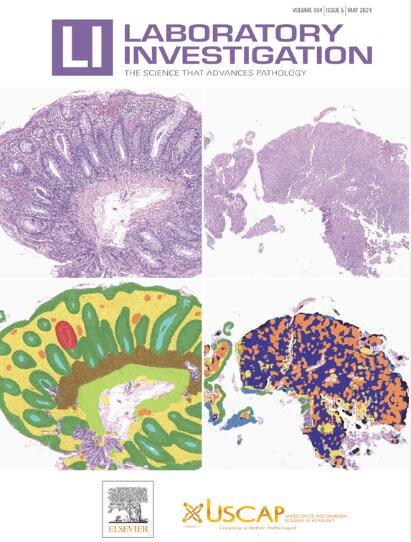瘦素通过调节端粒酶活性和端粒长度调节多囊卵巢综合征的卵巢颗粒细胞凋亡
IF 5.1
2区 医学
Q1 MEDICINE, RESEARCH & EXPERIMENTAL
引用次数: 0
摘要
瘦素(LEP)与多囊卵巢综合征(PCOS)的发病机制有关。本研究探讨了 LEP 在多囊卵巢综合征中的作用机制。研究分析了80名多囊卵巢综合征患者和匹配对照组的基线信息,并测量了血清和卵泡液(FF)中的瘦素和瘦素受体(LEPR)水平、端粒酶活性和相对端粒长度(TL)。分析了FF LEP与端粒酶活性和端粒长度的相关性。评估了经梯度 LEP 处理的 KGN 细胞(卵巢颗粒细胞)的活力和凋亡情况。研究了 LEP-LEPR 的相互作用。测定了 LEPR、c-MYC 和 TERT 的水平以及 TERT 启动子区域的 c-MYC 蛋白表达。检测了核c-MYC转位。多囊卵巢综合征患者血清和卵巢滤泡中的 LEP 上调。FF LEP与端粒酶活性和TL呈正相关。低浓度LEP促进KGN细胞增殖,高浓度LEP剂量依赖性地抑制细胞增殖,促进细胞凋亡,上调LEPR,提高端粒酶活性和相对端粒酶活性。c-MYC 在 TERT 启动子区域的富集上调了 TERT,改变了端粒酶活性和 TL,并诱导细胞凋亡。简而言之,LEP/LEPR可激活c-MYC,调节TERT的表达,提高端粒酶活性和TL,从而诱导卵巢颗粒细胞凋亡,参与多囊卵巢综合征的发生。本文章由计算机程序翻译,如有差异,请以英文原文为准。
Leptin Modulates Ovarian Granulosa Cell Apoptosis by Regulating Telomerase Activity and Telomere Length in Polycystic Ovary Syndrome
Leptin (LEP) is implicated in the pathogenesis of polycystic ovary syndrome (PCOS). This study investigates the mechanism of LEP in PCOS. The baseline information of 80 PCOS patients and matched controls was analyzed, with serum and follicular fluid (FF) LEP and LEP receptor (LEPR) levels, telomerase activity, and relative telomere length (TL) measured. The correlation of FF LEP with telomerase activity and TL was analyzed. The viability and apoptosis of KGN cells (the ovarian granulosa cells) treated with gradient LEP were assessed. LEP-LEPR interaction was examined. LEPR, v-myc avian myelocytomatosis viral oncogene homolog (c-MYC), and telomerase reverse transcriptase (TERT) levels and c-MYC protein expression in the TERT promoter region were determined. Nuclear c-MYC translocation was detected. LEP was upregulated in sera and FF of PCOS patients. FF LEP positively correlated with telomerase activity and TL. Low-concentration LEP facilitated KGN cell proliferation, and high-concentration LEP dose-dependently suppressed cell proliferation, promoted apoptosis, upregulated LEPR, and increased telomerase activity and relative TL. LEP-LEPR interaction upregulated c-MYC and facilitated its nuclear accumulation. c-MYC enrichment in the TERT promoter region upregulated TERT, altering telomerase activity and TL and inducing cell apoptosis. Briefly, LEP/LEPR activates c-MYC, modulates TERT expression, and increases telomerase activity and TL, thus inducing ovarian granulosa cell apoptosis and participating in PCOS.
求助全文
通过发布文献求助,成功后即可免费获取论文全文。
去求助
来源期刊

Laboratory Investigation
医学-病理学
CiteScore
8.30
自引率
0.00%
发文量
125
审稿时长
2 months
期刊介绍:
Laboratory Investigation is an international journal owned by the United States and Canadian Academy of Pathology. Laboratory Investigation offers prompt publication of high-quality original research in all biomedical disciplines relating to the understanding of human disease and the application of new methods to the diagnosis of disease. Both human and experimental studies are welcome.
 求助内容:
求助内容: 应助结果提醒方式:
应助结果提醒方式:


